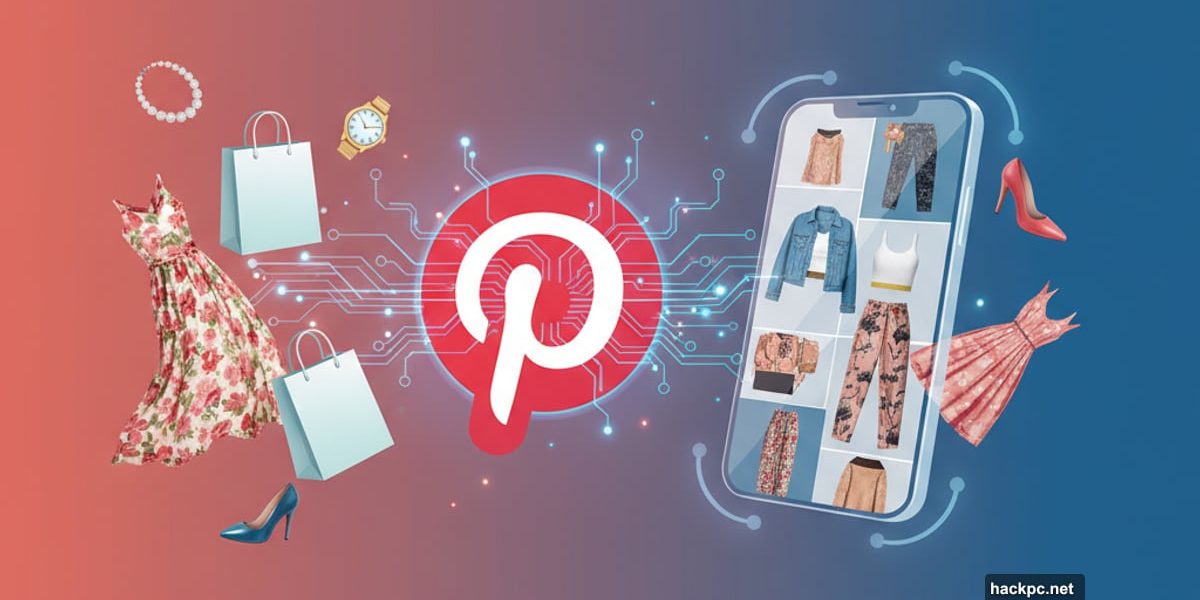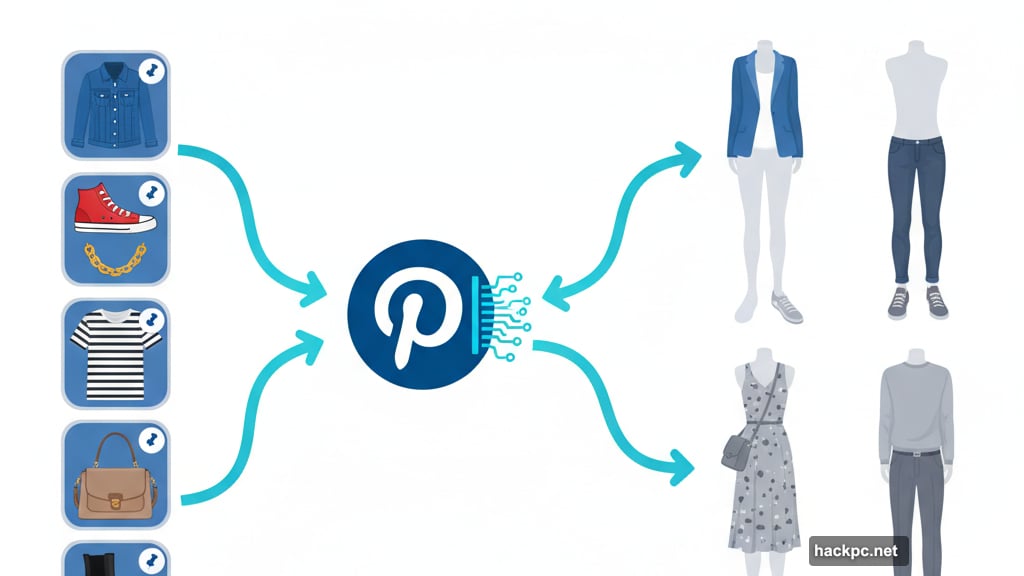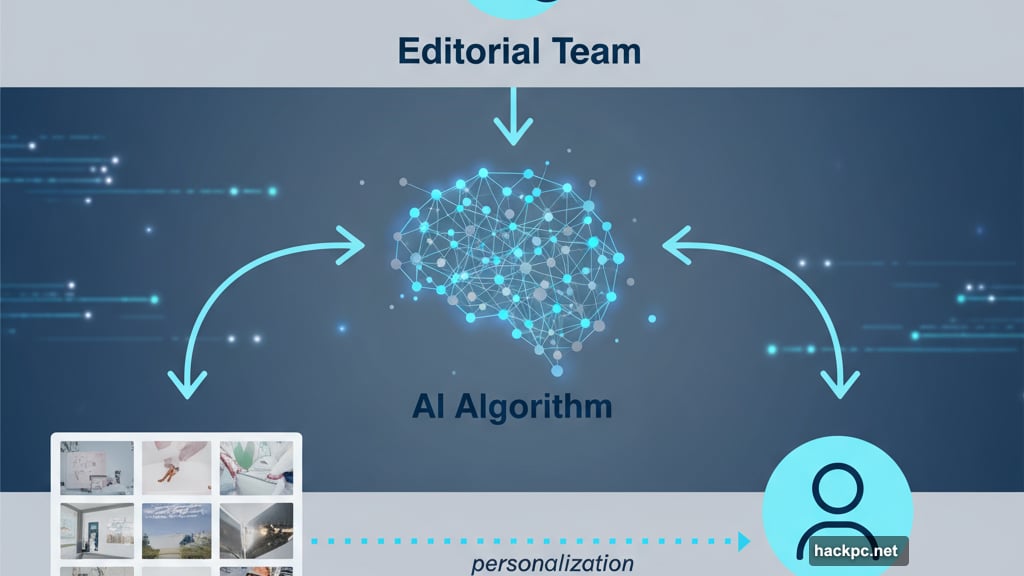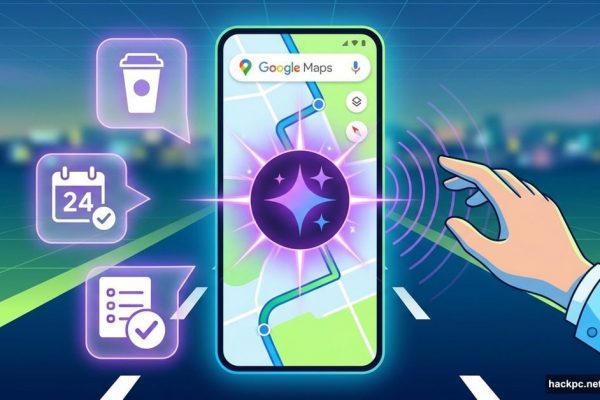
Pinterest wants to dress you. And decorate your home. And basically become your digital stylist.
The platform just rolled out AI-powered boards that do more than organize pretty pictures. These new features actually curate outfits, suggest products, and create personalized collections. It’s Pinterest’s biggest push yet to transform from inspiration board into shopping assistant.
But here’s the interesting part. While Pinterest races to add AI features, it’s simultaneously fighting to keep AI-generated content off its platform. That tension reveals something important about where social shopping is headed.
Your Pins Become Your Wardrobe
The “Styled for you” feature turns saved fashion Pins into virtual outfit combinations. Think of it like having a stylist who already knows your taste because they’ve watched everything you’ve saved.
Tap any item in an AI-generated collage. Then swipe through recommended pieces from your saved Pins. The system mixes and matches clothing and accessories to create complete outfits tailored to your style preferences.
So instead of scrolling endlessly through disconnected images, you get cohesive outfit suggestions built from items you already liked. The AI acts as a personal shopper working with your existing closet, except your closet is digital Pins.
Boards That Build Themselves
“Boards made for you” takes personalization further. These AI-curated collections appear in your home feed and inbox without you creating them.
Pinterest blends editorial input with algorithmic suggestions to populate these boards. They feature trending styles, weekly outfit inspiration, and shoppable content. The company decides what deserves board status, but AI determines which boards you see and what fills them.
It’s an interesting middle ground. Human editors provide quality control. AI handles the personalization at scale. Neither works alone.
These automated boards will start appearing for U.S. and Canadian users in the next few months. Then Pinterest will watch how people interact before expanding globally.

The Shopping Assistant Endgame
Pinterest CEO made the strategy clear during the company’s Q2 earnings call. The platform wants to become an “AI-enabled shopping assistant.” Not just a place to find ideas, but a place to find exactly what to buy.
That explains the aggressive AI integration. Pinterest already uses AI for recommendations and visual search. Now it’s pushing AI into the core board experience that defines the platform.
But shopping assistants need trust. Users have to believe recommendations actually match their taste and needs. So Pinterest is betting that AI trained on your saved Pins knows you better than generic product algorithms.
The math makes sense. You’ve spent years teaching Pinterest what you like through saves and clicks. Now that data becomes training material for personalized shopping suggestions.
The AI Content Contradiction
Here’s where things get weird. Pinterest is simultaneously:
- Building AI features to personalize your experience
- Fighting to reduce AI-generated images on the platform
In April, Pinterest announced plans to label AI-generated and AI-modified images. It also added controls letting users reduce AI-generated Pins in their feeds.
Why the contradiction? Because there’s a difference between AI that serves users and AI that floods platforms with synthetic content. Pinterest wants the first, not the second.
AI-generated images create authenticity problems for a visual platform. Users save Pins expecting real products, real homes, real fashion. Synthetic images break that trust, even if they look good.
So Pinterest uses AI as a tool while limiting AI as content. It’s a fine line that more platforms will need to walk as generative AI becomes ubiquitous.

New Tabs Change How Boards Work
Beyond AI features, Pinterest is restructuring how users interact with boards through three new tabs.
“Make It Yours” recommends fashion and home decor products based on saved Pins. It’s basically a shopping tab disguised as recommendations.
“More Ideas” suggests related Pins across categories like beauty, recipes, and art. This tab keeps you exploring within Pinterest instead of searching elsewhere.
“All Saves” simply shows everything you’ve saved. It’s the organizational feature boards were originally built for, now just one tab among several.
These tabs roll out globally over the next few months. They represent Pinterest’s shift from simple organization tool to discovery and shopping platform. Boards become less about storing ideas and more about generating new ones.
What This Means for Users
Pinterest is making a calculated bet. It’s wagering that users want curated, personalized shopping suggestions more than they want control over their boards.
The AI features are optional for now. But their prominence in feeds and inboxes suggests Pinterest wants them to become the default experience. Passive consumption of AI-curated content instead of active board building.
That could work beautifully for users who want shopping inspiration without effort. Or it could frustrate people who liked Pinterest precisely because they controlled what they saw.
The next few months will reveal which group is larger. Watch how Pinterest adjusts these features based on usage. If automated boards get buried deeper in menus, you’ll know users rejected the passive experience.
Pinterest is transforming from mood board to shopping assistant. The AI features launching now are just the beginning. Expect more automation, more product recommendations, and more shopping integrations.
Whether that’s what users actually want remains the open question. Pinterest is betting yes. We’ll find out if they’re right.



Comments (0)